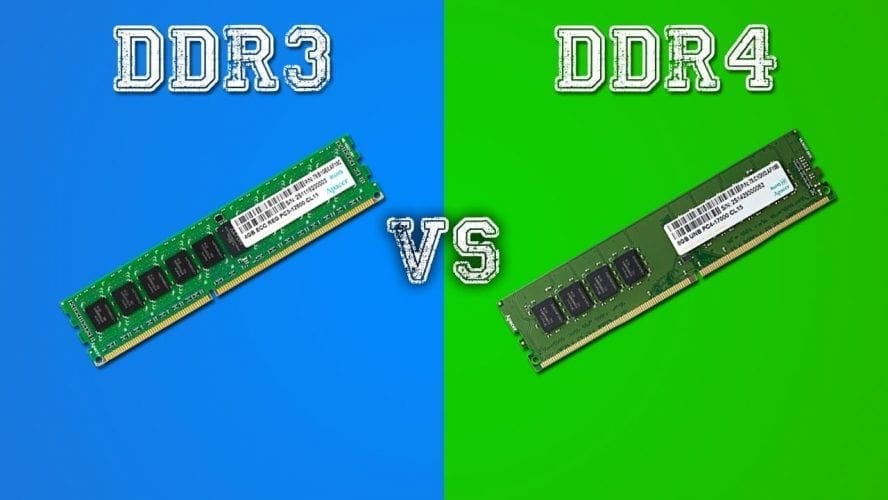The DDR3 was used by RAM manufacturers for good eight years and after that, they introduced the DDR4. Now the question is, what is actually the difference between the DDR3 and the DDR4? Below in this article, we will be looking at the benefits of the DDR4, what it has over the DDR3 in applications.
DDR4 VS DDR3
Presently, we have three main types of RAM for consumer-grade custom PC and they are DDR3, DDR3L, and DDR4. The DDR4 comes with some improvement over the DDR3. For example, it has a greater range of available clock speeds and timings, lower power consumption, and reduced latency. On the part of DDR3, the fast RAM is geared in four different choices. They are 1333Mhz, 1600Mhz, 1866Mhz, and 2133Mhz which is the maximum limit. Although 800Mhz and 1066Mhz configuration still exist, they are used in the faster sibling. The DDR4 doesn’t seem to have any speed clocking limit, it only runs as fast as it could.
Another notable improvement on the DDR4 is the RAM that G-Skill shows off which is a new brand with their 128GB DDR4 configuration which is about four 32GB sticks and each clocked to 3000Mhz, while the G-Skill 8GB TridemtZ series is sold on shelves at 4266Mhz.
Furthermore, the power consumption for DDR3 layout is around somewhere between 1.5 volts in default setups and up to 1.975 volts in overclocked machines, whereas the DDR4 is more efficient as it runs on 1.2v, a setting which can be reduced to a bottom of 1.05v depending on the manufacturer of the RAM.
The standard DDR3L run at 1.35v which is an improvement compared to the DDR3, but still, the DDR4 is the overall winner. This is to say that higher transfer rates can be achieved in DDR4 at lower voltages. This helps to reduce the risk of your RAM getting fried during overclocking test and it also reduces the strain that taxing programs might have on a machine as a whole.
Another improvement that the DDR4 has over DD43 is that the maximum limit of memory it can store on a single motherboard. For example, the maximum limit of DDR3 configuration is 128GB, while the maximum limit of DDR4 is four times the DDR3 which is 512GB. However, no systems have run a setup successfully in real-world testing.
On Haswell gaming set-up, the DDR4 and DDR3 are compatible and their differences are slim to none. However, when it comes to Skylake there are a number of improvement on heavy CPU application, but still, the difference isn’t that much.
Although the Skylake may not offer any reasonable improvement over Haswell for gaming, the DDR4 will run more RAM demanding application like WinRar or Photoshop on either generation of CPU.
DRR3 VS DDR4 Price
Just as expected, the DDR4 is more expensive than the DDR3. When comparing the RAM sticks, we discovered that 16GB total clocked to 2400Mhz of DDR2 cost $103.99, while the same pair on DDR4 is selling at a price of $129.99. As you can see, the price difference is not that much.
You should also have it at the back of your mind that the price tags above are just for the RAM sticks themselves, so you will have to buy the additional components to get your system upgraded to full DDR4.
Conclusion:
When it comes to gaming, the DDR4 is best so far. If you are building a new PC and your major concern is to make it future proof, the DDR4 will be your best bet in Skylake-based configuration.

